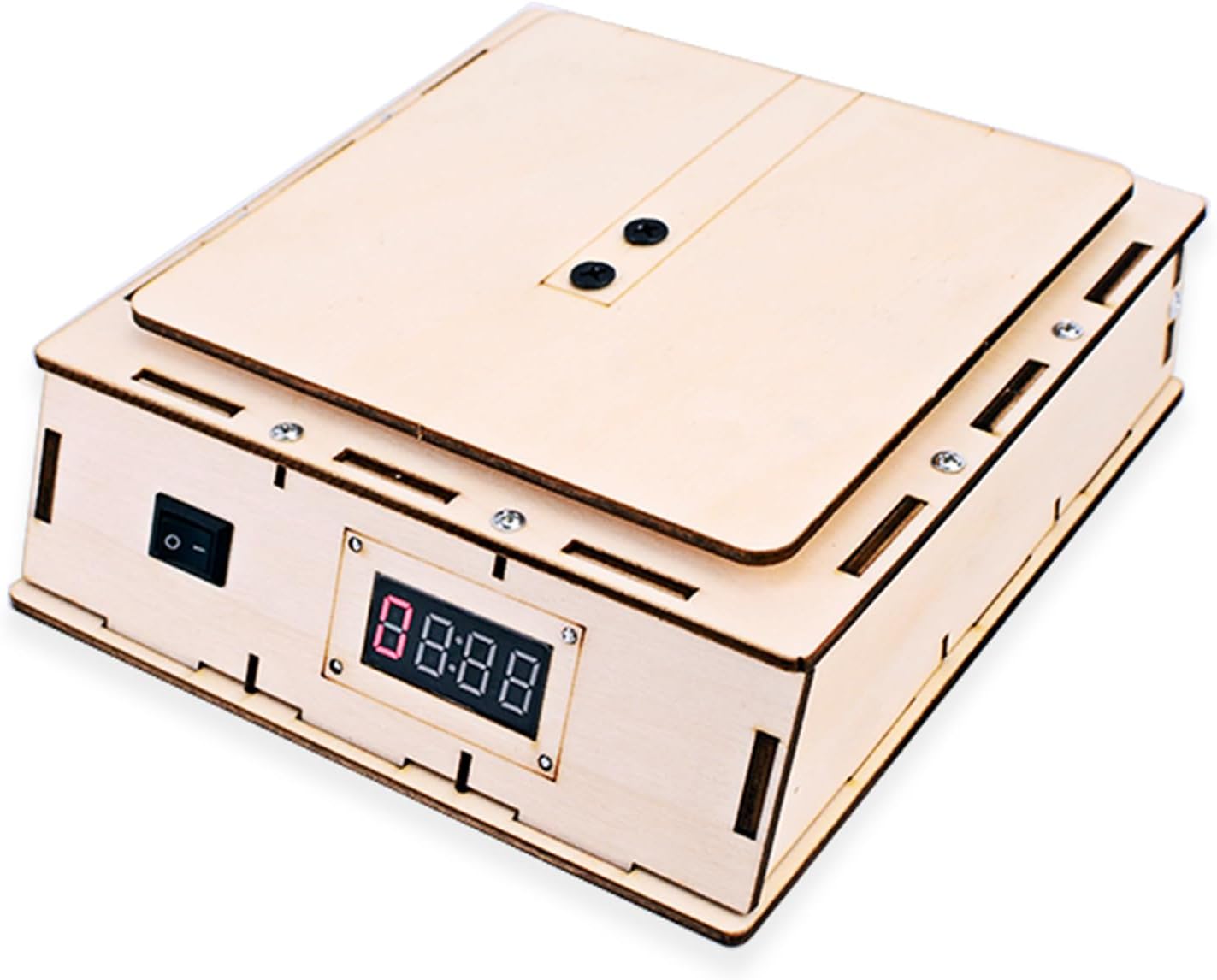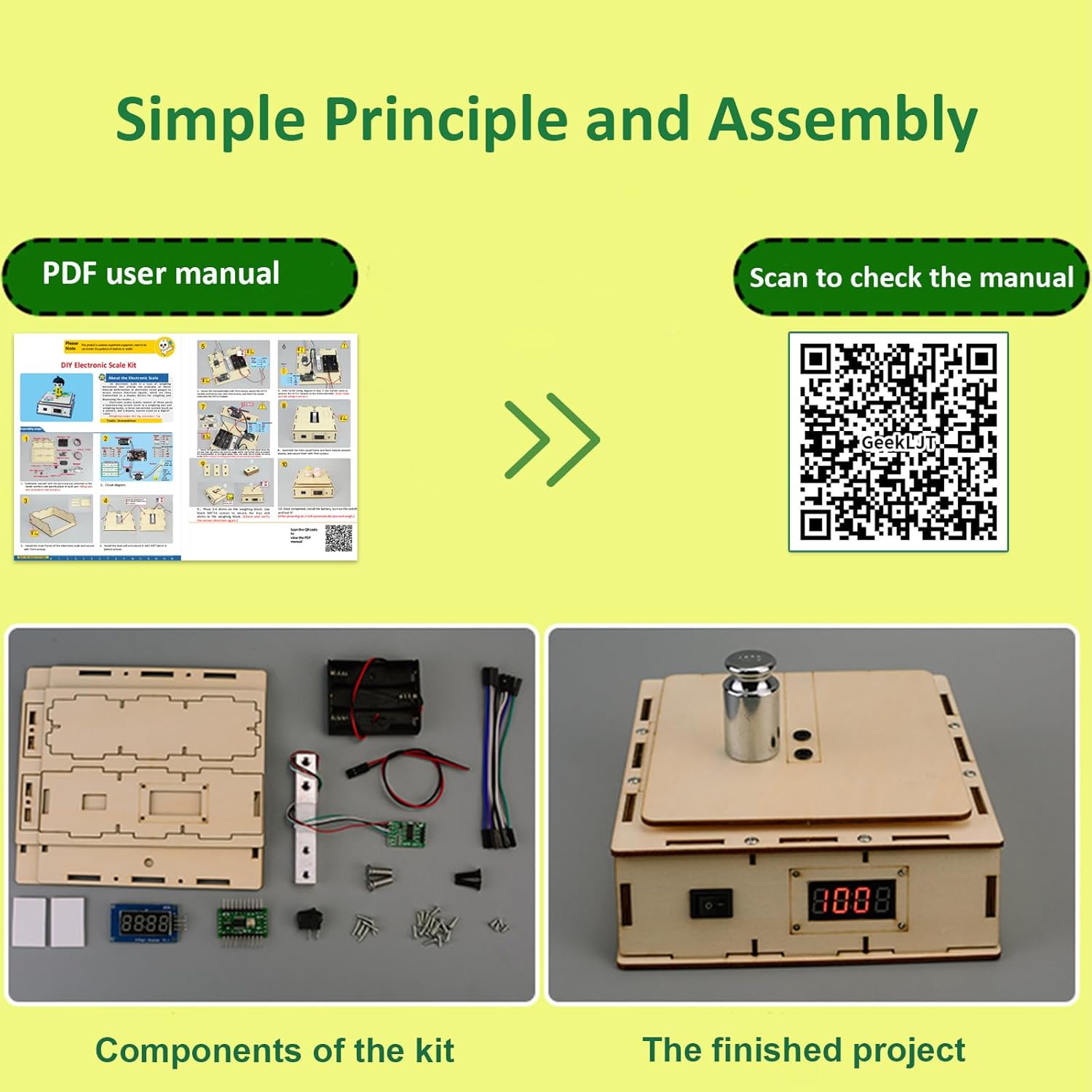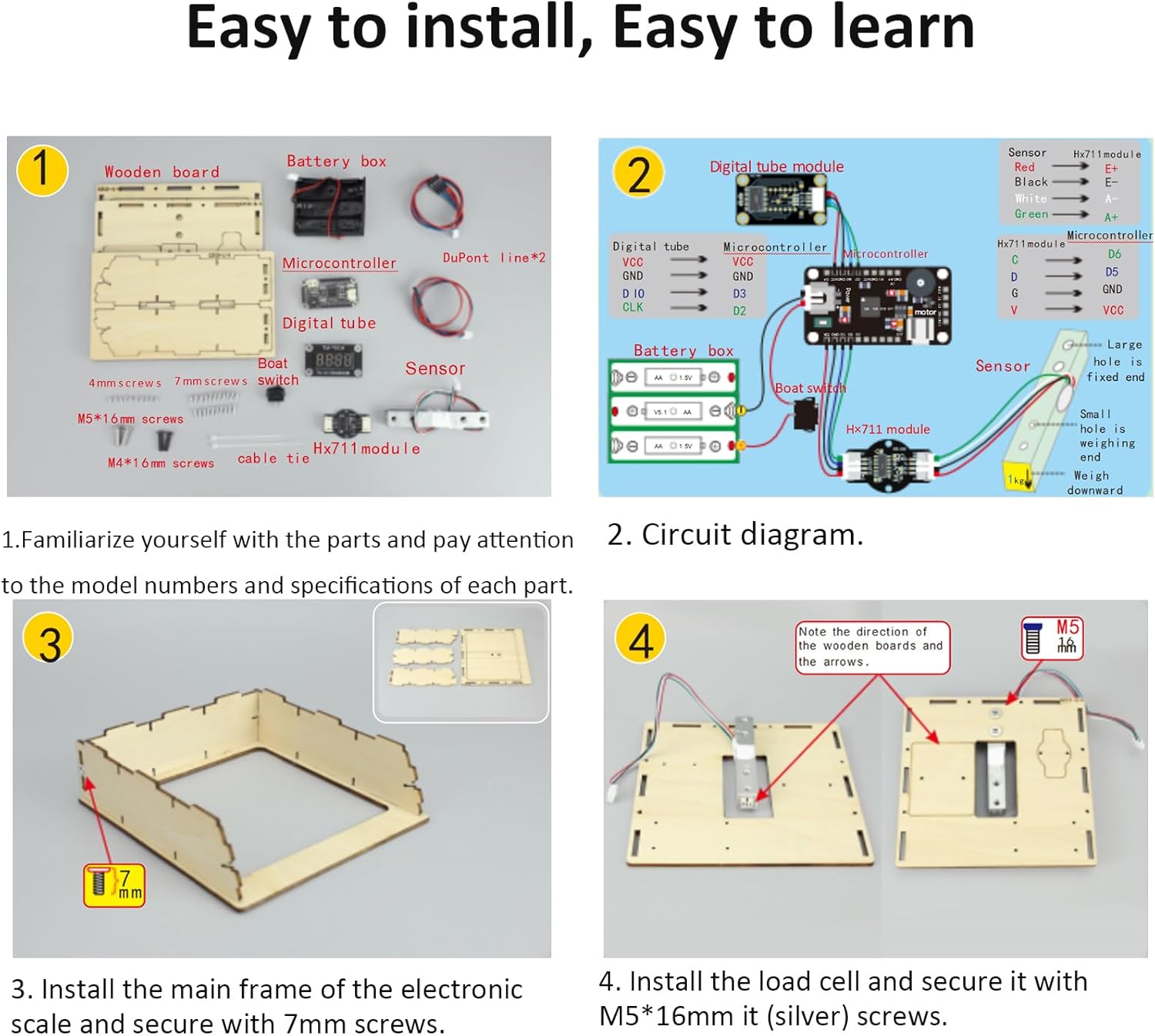






Unveiling the Science of Measurement: A Deep Dive into the DIY Electronic Scale Kit
In an age of digital convenience, where we effortlessly tap screens for instant answers, the fundamental principles behind everyday technology can seem like magic. How does a simple platform know the weight of an object and display a precise number? The DIY Electronic Scale Kit demystifies this modern marvel, transforming abstract concepts of physics and electronics into a tangible, hands-on learning experience. More than just a toy, this project kit is a gateway to the worlds of STEAM (Science, Technology, Engineering, Arts, and Mathematics), designed to ignite curiosity and build practical skills for students, hobbyists, and future engineers.
This article explores the journey of building this electronic scale, from the components in the box to the profound scientific principles that make it work, illustrating why it is such a valuable educational tool.
From Box to Functional Scale: The Building Experience
The kit arrives as a collection of components, inviting you on a mission of creation. The process of assembling the DIY electronic scale is a fundamental lesson in engineering and patience. You are not just a passive user; you are the builder. The kit typically includes all the necessary parts: a load-bearing structure (the weighing pan and body), a central force conversion system (the strain gauge sensor), and a display system (often an LCD or digital screen), along with wires, resistors, and a main circuit board.
Following the instructions to assemble these components is a practical exercise in following technical diagrams, understanding spatial relationships, and developing fine motor skills. For college and high school students, this mirrors the prototyping phase of real-world engineering projects. The act of soldering connections (if required) or carefully plugging in wires reinforces the importance of precision and attention to detail. Once the final screw is tightened and the last connection is made, the moment of truth arrives—powering on a device you built with your own hands. The sense of accomplishment is immediate and powerful.
The Heart of the Machine: Understanding the Working Principle
The true genius of this kit lies in its demonstration of a fundamental scientific principle: how physical force can be converted into an electrical signal. The core component is the electronic strain gauge. Here’s a step-by-step breakdown of the working principle:
-
Application of Force (Weight): When an object is placed on the scale’s weighing pan, its weight applies a force downward.
-
Deformation (Strain): This force causes a slight deformation, or “strain,” in a metal component (the sensor) inside the scale. This deformation is microscopic—far too small to see with the naked eye.
-
Resistance Change: The strain gauge, which is a pattern of thin wire or foil bonded to this metal component, also stretches or compresses minutely. This physical change alters the electrical resistance of the strain gauge.
-
Electrical Signal Output: The change in resistance is measured by the kit’s circuitry, typically a Wheatstone bridge configuration, which converts the tiny resistance change into a small, measurable electrical voltage. The greater the weight, the greater the deformation, and the larger the voltage signal.
-
Signal Processing and Display: This minute analog voltage signal is then fed into an analog-to-digital converter (ADC) on the main board. The microcontroller (the “brain” of the scale) processes this digital signal, calibrates it against a known standard, and sends the final weight information to the display screen.
This entire process, from placing an object to seeing a number, happens in milliseconds. By building the scale yourself, you move from simply knowing that it works to understanding how it works.
The Three Pillars of the Scale: A Systems Engineering Approach
The kit provides a perfect case study in systems engineering by breaking down the electronic scale into its three essential subsystems:
-
The Load-Bearing System: This includes the weighing pan and the mechanical structure that supports it. Its job is to channel the force of the object’s weight directly and efficiently to the sensor. The design must be rigid enough to not flex in unintended ways, ensuring accurate force transmission.
-
The Force Conversion System: This is the core of the scale—the strain gauge sensor. It acts as a transducer, converting a physical quantity (force) into an electrical quantity (voltage). Understanding this component is key to understanding a vast array of modern sensors used in everything from car airbags to aerospace engineering.
-
The Display System: This is the user interface, typically a digital screen like an LCD. It takes the processed digital signal from the microcontroller and presents it in a human-readable format. Some advanced kits might even include features like automatic taring, which the microcontroller handles by zeroing out the display when the tare function is activated.
Assembling these three distinct systems teaches the invaluable engineering concept of modularity, where complex devices are built from simpler, functional blocks.
Beyond Assembly: The STEAM Educational Powerhouse
The learning outcomes of this kit extend far beyond assembling components. It is a holistic STEAM educational tool:
-
Science: It demonstrates practical physics (forces, deformation, Hooke’s Law) and electrical principles (resistance, voltage, circuits).
-
Technology & Engineering: It introduces students to sensor technology, signal processing, and basic programming logic embedded in the microcontroller.
-
Arts: The encouragement to paint and customize the finished product adds a crucial artistic dimension. This fosters creativity and personal investment, transforming a technical project into a unique personal creation.
-
Mathematics: The process involves calibration, which requires understanding linear relationships between force and electrical signal, and potentially converting between units of measurement.
An Excellent Gift for Curious Minds
This DIY Electronic Scale Kit is more than a pastime; it is an investment in a skill set. It is an excellent gift choice for students, beginners, and anyone with a curiosity about how the world works. It develops hands-on skills, critical thinking, and a deeper, more intuitive understanding of principles that are often only read about in textbooks. The satisfaction of building a functional, precise instrument from scratch is a powerful motivator, potentially sparking a lifelong passion for science and engineering. It is a meaningful gift that offers not just a toy, but an experience and an education, making it perfect for holidays, birthdays, or as a stimulating classroom project.
























